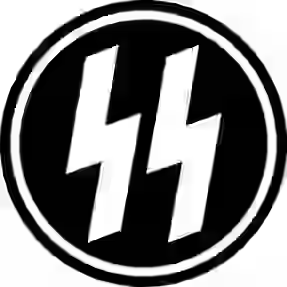SS-Mann
Meaning: Trooper
The SS-Mann (also spelled SS-Man) was the lowest enlisted rank in the Waffen-SS, equivalent to a private in modern militaries. Established in 1925 with the formation of the Schutzstaffel (SS), this rank represented the entry-level position for recruits joining the Waffen-SS, the combat arm of the Nazi Party’s elite paramilitary organization. Within the broader system of SS ranks and SS ranks WW2, the SS-Mann served as the foundational role from which a soldier could rise through the hierarchy. Recruits underwent rigorous ideological and physical training to align with the SS’s strict standards, preparing them for roles in combat, security, or concentration camp duties during World War II.
The role of an SS-Mann was primarily that of a disciplined foot soldier, tasked with executing orders from higher-ranking non-commissioned officers like Scharführer or Untersturmführer. In the context of World War 2 German ranks and Waffen SS rank progression, this was a critical starting point. SS-Mann soldiers served in various capacities, from frontline combat in elite divisions such as the Leibstandarte SS Adolf Hitler to auxiliary duties in rear echelons. Their responsibilities included basic infantry operations, guard assignments, and supporting tactical missions under direct supervision. This seemingly simple rank held deep strategic importance, as the SS-Mann formed the backbone of Waffen-SS units, embodying the organization’s ideological zeal and military discipline.
The insignia for an SS-Mann was minimal, consisting of a plain black collar tab with no pips or stripes, setting it apart from higher SS ranks. This simplicity made it both common and collectible, with militaria enthusiasts seeking authentic examples for their historical significance. The lack of ornate decoration reflected its junior status, yet its omnipresence across all branches of the Waffen-SS makes it a key element in understanding SS ranks WW2 structure and evolution.
Today, the SS-Mann rank is a focal point for WWII historians, reenactors, and collectors who study World War 2 German ranks and Waffen SS rank systems. Its history offers valuable insight into the internal organization of the Waffen-SS and the broader Nazi military apparatus. The collectible insignia and documented service roles make the SS-Mann an enduring subject in academic research, militaria auctions, and reenactment communities, with the alternative spelling SS-Man improving global searchability for those interested in WWII German military history.
